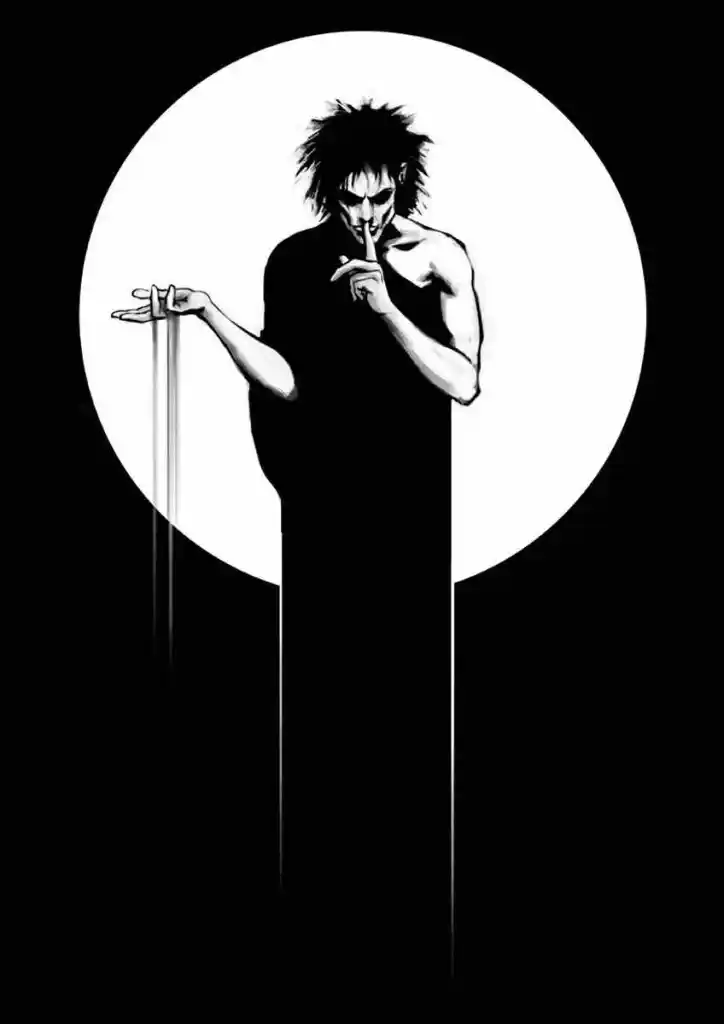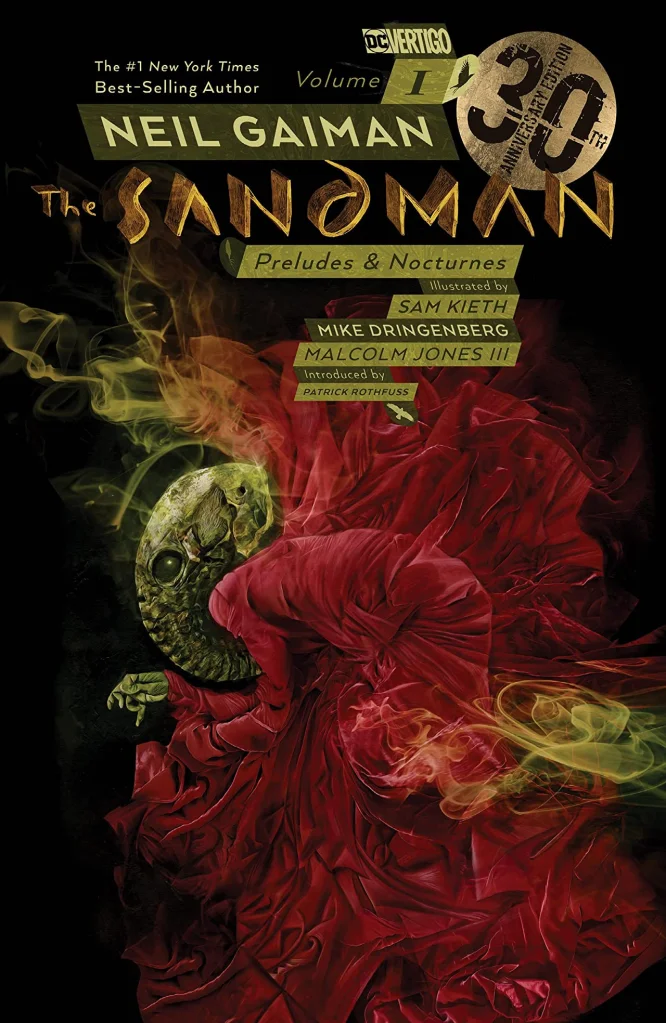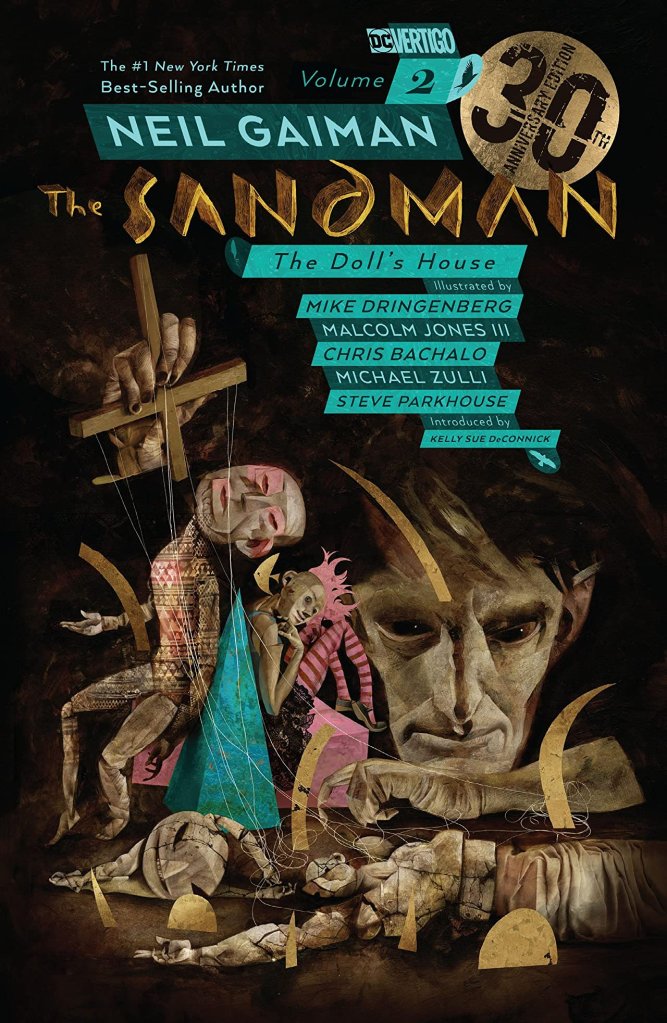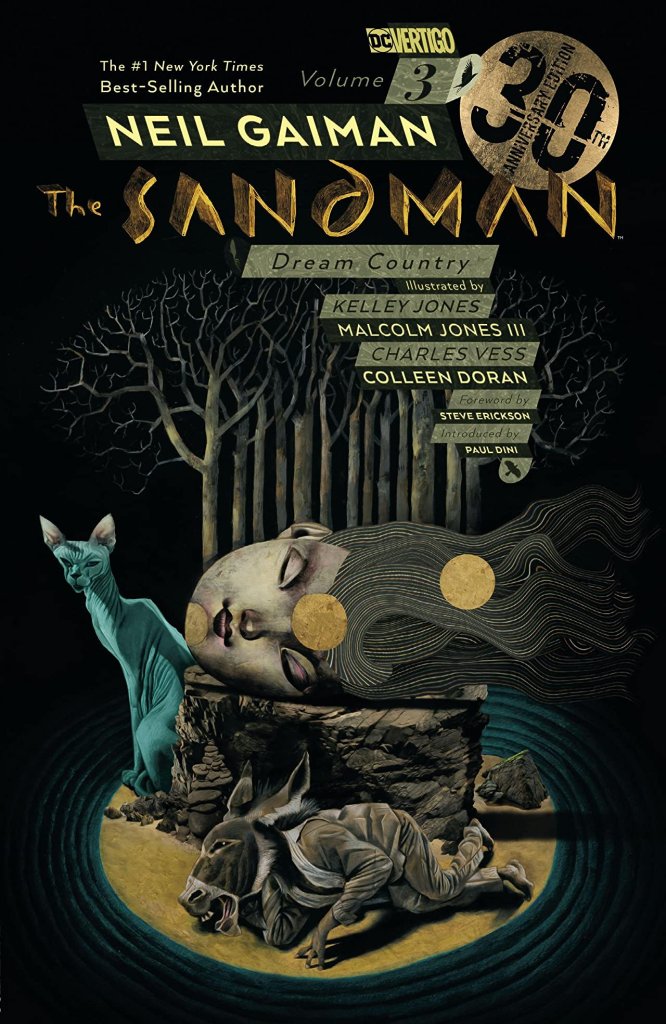
From the first time I read Neil Gaiman’s The Sandman in 2013, I adored the series. It felt like this beautiful mixture of traditional prose literature and graphic novels and it was something I hadn’t seen in any of the comics I’d read to that point. The series is as much a story about Morpheus, the Lord of Dreams, and his other siblings as it is about stories, themselves. It’s one of those series that has remained popular over the 30 years since it first debuted – and for good reason. So, in light of the imminent release of Audible’s audio adaptation of the series, I felt it a good time to go back to those first few volumes (those that are being adapted for the series) and take a look at how they read seven years after I first read them. In short, they still hold up remarkably well, even if parts of them haven’t aged the best. The Sandman is a great series and it’s impressive how much of its magic is present in these first twenty issues.
(NOTE: There will be mild spoilers for the first 20 issues/three volumes of The Sandman.)
A rich blend of modern myth and dark fantasy in which contemporary fiction, historical drama and legend are seamlessly interwoven, THE SANDMAN follows the people and places affected by Morpheus, the Dream King, as he mends the cosmic–and human–mistakes he’s made during his vast existence.

The Sandman: Volume 1 – Preludes & Nocturnes (written by Neil Gaiman, illustrated by Sam Kieth and Mike Dringenberg
It’s interesting rereading this first volume of The Sandman years after I first finished the season. It’s a bit of a mixed bag for me, with the plot a little scattered and some very uneven artwork. But it’s also immediately clear just how much of the magic that the series is known for is present from its first issue. Gaiman has always had a gift with words, a talent at spinning truly poetic descriptions of characters, things, and places we’ve never seen. His work in these first eight issues shouldn’t be undervalued – there’s some great stuff here (particularly in the sixth and eighth issues).
The plot is fairly simple and surprisingly episodic – after being captured by a magician and imprisoned for 80 years, Morpheus must go on a quest to recover three artifacts that were stolen from him and contain pieces of his power. The rest of the story follows him as he goes from place to place, in search of these artifacts. It’s not the most complex of storyline, but it works for what it has to do: introduce us to the world of the comic. It’s rather impressive how little of these issues feel like exposition dumps; instead, Gaiman uses this quest as a way to explain the various aspects of the series to us in a naturalistic way. And it works extremely well and proves very entertaining, even if I wouldn’t say this first volume is a high point of the series.
The artwork, though, is a bit less enjoyable for me. The first five issues are illustrated by Sam Kieth while the latter three are illustrated by Mike Dringenberg. Neither Kieth nor Dringenberg’s styles proved to be ones that I enjoyed. It’s not that their artwork is bad – far from it, in fact – it’s just that it wasn’t really my style and it always makes it a bit difficult for me to fully immerse myself in the story. On top of that, the fact that Dringenberg takes over partway through the arc gives the whole thing a sort of visual mishmash. He does a solid job of match Kieth’s style, but you can still tell it’s a different artist doing the work and it detracts a bit from the experience for me.
All that said, though, Preludes & Nocturnes is still a great read. It’s always fun to revisit the tale that begun The Sandman. So much of the magic the series is known for is present from its very first issue and it will always be enjoyable to sit down and experience this beginning again and again. It’s a great spot for the story to begin and it’s a great read. (4 out of 5 wands.)

The Sandman: Volume 2 – The Doll’s House (written by Neil Gaiman, illustrated by Mike Dringenberg (9-11, 14-16), Chris Bachalo (12), Michael Zulli (13), and Sam Kieth (15))
For me, The Doll’s House is where The Sandman first starts feeling like the series it’ll become known for being. A lot of seeds are sown for later arcs – Rose, Barbie, Desire’s beef with Dream, etc – and a lot of the series’ rules are first codified in these issues. But it also maintains some of the problems found in the series’ first arc as well and also manages to rank among the arcs that have aged the least well.
The Doll’s House has a much stronger story than Preludes & Nocturnes. It’s a story about Rose Walker and her family, continuing to tie up story threads left dangling from the previous arc. While everything takes a bit of time to get moving – the arc starts with one of those one-shots The Sandman is famous for having, which ends up being a muse on the very act of storytelling, a central theme of the series – once the story gets going, it never really stops. We’re taken from England to Florida to Georgia (and a serial killer’s convention) all the way back to the Dreaming as Rose Walker tries to unravel the threads of her family history.
I still find the narrative to be a pretty good one, but there are elements of it that haven’t aged well. For a start, Desire is frequently referred to by the “it” pronoun. I understand that it was the early 90s when this was published and the singular “they/them/their” pronoun wasn’t as widely used as it is today, but hearing an explicitly androgynous character like Desire referred to as an “it” hits in an unfortunate way. I don’t think there was any mal intent on Gaiman’s part, but it’s something that hasn’t aged well. The same is true for some of the scenes depicted in the serial killer’s convention plot. To be fair, Gaiman never comes close to sympathizing with these killers, but some of those scenes are so disturbing that it’s almost not fun to read them. Perhaps that’s the point, but I think it’ll be hard for some modern readers to fully get behind that.
Still, there’s a lot to love in The Doll’s House, though, including its artwork. This time, the bulk of the issues are illustrated by Mike Dringenberg, giving more of the artwork a kind of uniformity that I felt was missing in the first arc. A few of the issues are illustrated by other artists – Chris Bachalo tackles issue #12 while Michael Zulli illustrates issue #13 – but both of these issues act more as side plots of the main story and so their differing art style feels intentional and appropriate. Dringenberg’s art style is still not my favorite, but it certainly does the job. There are some beautiful images in this book – often a mixture of reality and surreality – but they are deftly balanced with the kind of artwork needed to ensure the story is visually understandable.
At the end of the day, The Doll’s House inches The Sandman closer to what the series is known for. It features a main storyline that, while featuring some elements that haven’t aged well, remains devilishly interesting and captivating to read. It’s impressive seeing just how much of the series’ overarching storyline is seeded in these early arcs and it’s clear, even from this early on, how well Gaiman understands the world and the characters he’s created. I think that if readers can make it to this arc, they’ll be hooked into the world of The Sandman. (4.5 out of 5 wands.)

The Sandman: Volume 3 – Dream Country (written by Neil Gaiman, illustrated by Kelley Jones (17-18, Charles Vess (19), and Colleen Doran (20))
Dream Country is a bit tricky to review as it’s less of an arc and more of a collection of one-shots – though all of the one-shots are great. There’s no storyline to follow here, no characters to track. Instead, this volume is more akin to a short story collection, where each issue has to be looked at as a complete story – and it’s a lot of fun. Dream Country is the volume where it becomes apparent just how varied The Sandman can be.
First up is “Caliope,” one of those stories with a great idea that’s a bit difficult to read. The idea of a writer capturing a muse is a great one, but having to see the awful things done to Caliope doesn’t make for a very fun read. Still, it falls into that common Sandman trope of Morpheus coming by to give a bad person their just desserts and that remains as satisfying as ever. Plus, Kelley Jones’ artwork is gorgeous. “Caliope” is one of those stories that probably worked when it was first published but hasn’t aged so well.
Second is “A Dream of a Thousand Cats,” the first of many Sandman issues that could be considered classic. Here, a cat tells the tale of when she met the cat Dream and all that she learned from him. It’s a delightful little tale with some more gorgeous artwork from Kelley Jones. It’s interesting reading this directly after the previous issue and seeing how this series can so deftly go from a dark story about a writer capturing Caliope to a story about cats wanting to dream a world where they are the dominant species. It’s a testament to the malleability of the world Gaiman has created that these issues can work back-to-back like this at all.
Up third is “A Midsummer Night’s Dream,” my personal favorite issue of the volume. Here, William Shakespeare and his troupe of actors perform A Midsummer Night’s Dream for a rather unusual audience – the fae that inspired the very play. In a collection of one-shots that are all about the power of stories, this particular story might be the one that best touches on that theme. Plus, it’s paired with the gorgeous artwork of Charles Vess, who creates paintings on each page that perfect capture the majesty of the fae. If you only read a single issue of The Sandman, I’d argue this is the one to read.
Lastly, there’s “Façade,” the odd story out. Dream doesn’t appear in this one at all, rather it’s his sister, Death, who visits the story’s main character, Urania, in a moment of darkness. It’s an interesting premise – Urania is basically a superhero who hates the loss of her normal life. She desperately wants to return to a life of normalcy, but she is unable to. It’s this desire for death that we track throughout the comic. The highlight, of course, is the conversation between Urania and Death. It’s a weird story, though, accompanied by some suitably surreal art from Colleen Doran, but it’s an enjoyable one nonetheless.
All in all, Dream Country is a weird installment in The Sandman series, but it’s also one of my favorites. It’s nice, after an arc as heavy as The Doll’s House, to take a moment and explore some of the other corners of Gaiman’s world. Each of the stories are super interesting and well worth a read on their own. The artwork for each issue fits perfectly with the story being told and it all coalesces into what might be my favorite of the first three volumes of The Sandman. (4.5 out of 5 wands.)

I love Dream Country, for me it was the point I really knew I was reading something special
LikeLike